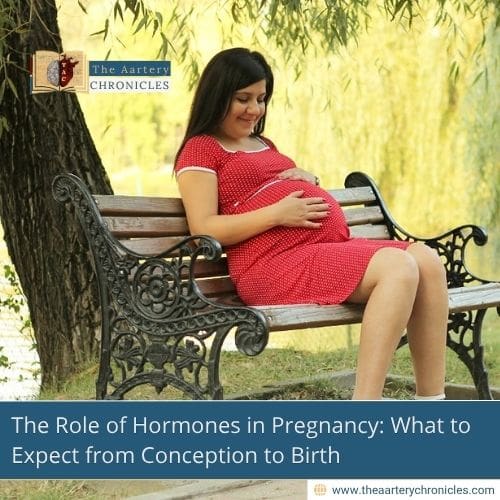

Anemia Mukt Bharat: Ending Anemia for a Healthier India
Introduction
Anaemia is a major public health issue in India, disproportionately affecting children, adolescent girls, and pregnant women. Iron deficiency anaemia can lead to developmental impairments in children, reduced productivity in adults, and severe complications in pregnancy, including perinatal loss, premature births, and low birth weight (LBW) babies. Recognizing the urgency of this issue, the Government of India introduced the Anemia Mukt Bharat (AMB) initiative in 2018 under the National Health Mission (NHM). This program aims to systematically reduce anaemia prevalence across various populations through targeted interventions and a structured implementation framework.
Understanding Anemia
In pregnant women, anaemia is associated with postpartum haemorrhage, neural tube defects, low birth weight, preterm births, stillbirths, and maternal mortality. In malaria-endemic areas, anaemia is one of the most prevalent yet preventable causes of maternal and child deaths. In its most severe form, anaemia can be fatal.
There are multiple causes of anaemia, among which iron deficiency is the most significant. It accounts for approximately 50% of anaemia cases among school children and women of reproductive age, and nearly 80% of cases in children aged 2–5 years. Other contributing factors include deficiencies in vitamin B12 and folic acid, chronic diseases, genetic disorders such as thalassemia, and infections like malaria and hookworm infestations.
Objectives of Anemia Mukt Bharat
The AMB initiative sets an ambitious target of reducing anaemia prevalence in India by three percentage points per year among children, adolescents, and women in the reproductive age group. This goal aligns with the National Nutrition Mission (POSHAN Abhiyaan) and Sustainable Development Goals (SDGs) to improve maternal and child health.
Additional symptoms may include a dry mouth, sore throat, and ongoing daytime tiredness or fatigue.
The Six-Intervention Strategy of Anemia Mukt Bharat
The Anemia Mukt Bharat (AMB) initiative aims to reduce anaemia across six beneficiary groups using a life cycle approach through six key interventions, implemented via a robust institutional mechanism. The targeted groups include:
- Children (6–59 months)
- Children (5–9 years)
- Adolescents (10–19 years)
- Pregnant and lactating women
- Women of reproductive age (15–49 years)
To tackle anaemia comprehensively, the Anemia Mukt Bharat initiative follows a six-pronged strategy
1. Prophylactic Iron and Folic Acid (IFA) Supplementation
- Biweekly IFA supplementation for preschool children (6 months to 5 years)
- Weekly IFA supplementation for school-age children (5–9 years), adolescents (10–19 years), and women of reproductive age (non-pregnant and non-lactating)
- Daily IFA supplementation for pregnant and lactating women
2. Deworming Campaigns
- Biannual mass deworming under the National Deworming Day (NDD) program for children and adolescents (1–19 years) on February 10 and August 10 each year.
- Deworming services for pregnant women during antenatal care (ANC) visits in their second trimester.
3. Intensified Year-Round Behaviour Change Communication (BCC) Campaign
This campaign is implemented to:
- Promote adherence to Iron and Folic Acid (IFA) supplementation and deworming.
- Encourage optimal infant and young child feeding (IYCF) practices, with a focus on providing adequate and age-appropriate complementary foods for children aged six months and older.
- Advocate for increased consumption of iron-rich, protein-rich, and vitamin C-rich foods, along with dietary diversification and food fortification.
- Support the practice of delayed cord clamping to enhance newborn health.
4. Testing and Treatment of Anemia
Screening of pregnant women, adolescent girls, and school children for early detection of anemia using:
- Digital Invasive Haemoglobinometer in field settings, Sub-Health Centres, and Health & Wellness Centres.
- Semi-auto analyzers in health facilities at Primary Health Centre (PHC) level and above.
- Point-of-care treatment to ensure timely intervention.
5. Strengthening Supply Chain Mechanisms for IFA and Essential Drugs
Ensuring the uninterrupted availability of IFA supplements, deworming tablets, and diagnostic tools in healthcare facilities and schools.
6. Addressing Non-Nutritional Causes of Anemia
Tackling malaria, fluorosis, and hemoglobinopathies (sickle cell disease, thalassemia) through integrated healthcare interventions.
Implementation and Coverage
The AMB initiative is implemented at the grassroots level through Anganwadi workers, ASHAs (Accredited Social Health Activists), and school teachers, ensuring last-mile connectivity. The program is monitored via the Anemia Mukt Bharat Dashboard, which provides real-time data on anemia prevalence, IFA distribution, and treatment coverage across states.
Achievements and Challenges
The Anemia Mukt Bharat initiative has made remarkable progress in increasing awareness, expanding access to screening and treatment, and strengthening nutritional interventions. It has led to a higher number of individuals being screened for anaemia, greater public awareness of preventive measures, and improved coverage of iron supplementation programs.
Despite these advancements, several challenges remain. Rural areas face infrastructure gaps and limited healthcare access, while socio-cultural barriers and disparities in nutrition and healthcare delivery continue to hinder progress. Additionally, sustaining the initiative’s impact requires continuous monitoring, evaluation, and adaptive strategies to ensure long-term effectiveness.
The Way Forward
To enhance the effectiveness of Anemia Mukt Bharat, the following steps should be prioritized:
- Stronger community engagement to improve compliance with IFA supplementation and dietary changes.
- Integration with maternal and child health services to ensure routine anaemia screening and treatment.
- Expansion of food fortification programs to include more iron-rich staples in government welfare schemes.
- Greater focus on genetic screening and counselling for hemoglobinopathies
- Use of digital tools and AI-driven analytics to streamline anaemia surveillance and treatment interventions
Conclusion
The Anemia Mukt Bharat initiative is a crucial step towards improving public health in India. While significant progress has been made in anaemia prevention and treatment, overcoming persistent challenges requires multisectoral collaboration, enhanced community participation, and sustained policy support. A well-executed AMB program has the potential to significantly reduce anaemia prevalence, improving overall maternal and child health outcomes and contributing to India’s long-term development goals.









